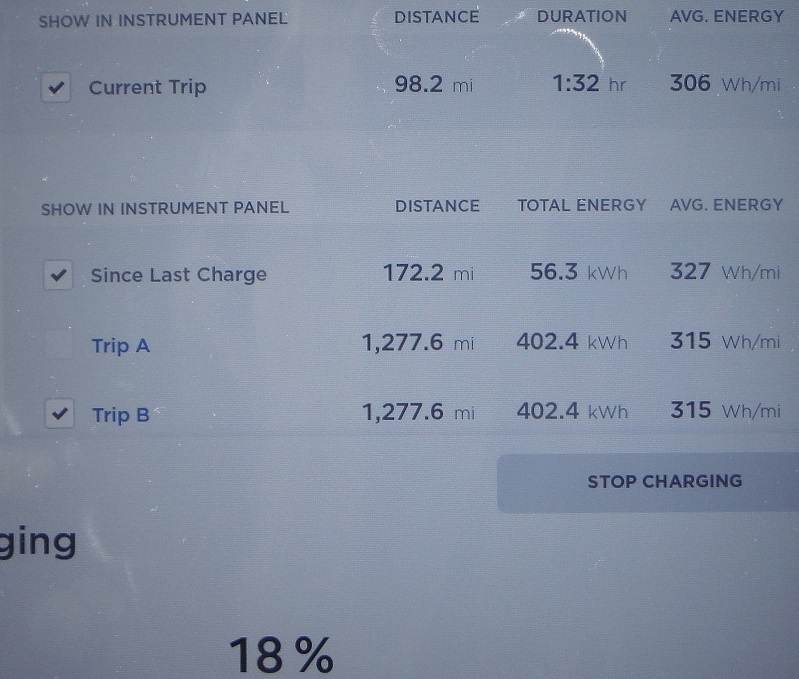ajdelange
Active Member
You certainly can rely on them but you have to know how to interpret them.I see absolutely horrible numbers often. Trouble is the car doesn't really report numbers you can rely on.
Tesla doesn't know what's acceptable to you. The median rate for the X seems to be about 0.3 mi/hr equivalent to a bit under 100 W or about 2.4 kWh/da. If you want the information collected by third party apps that poll the vehicle you will have to expect to pay that (I think most owners use at least one of these apps). 2.4 kWh costs me about $0.13/da. That's worth it to me.Let the car sit for two days and how many kWh is acceptable for it to drain away? I've never seen anything from Tesla.
That's not particularly good. The median for the X seems to be about 359 (the EPA rating is 316).I had trips where the average Wh/mi was good, like 333 or less (better than the EPA numbers)
At 333 you should be able to go 200 miles on 68% of your battery. If you can't go that far with a 68% charge then you aren't getting 333 Wh/mi. The various odometers and energy displays are in your vehicle to tell you what is going on. Learn to interpret them and you will have few surprises. Of course they cannot predict an un forecast thunderstorm (takes my X's consumption from right around 300 to over 400) or headwind but will tell you what your charge status is going to be at destination shortly after you encounter them.and yet I couldn't go further than 200 miles without nearly running out of juice.
No, you don't. Rain and headwinds effect ICE vehicles in exactly the same way they effect electric vehicles. The difference is that you can pull into a gas station anywhere when petrol gets low and you cannot (as yet anyway) do that in a BEV.In my ICE truck I know how far I can go and there just aren't many variables that impact mileage significantly.
Looking at the date you joined the forum it looks as if you have only had the car a month or so. When you learn how to read the displays, if you do, then I would expect your feelings in this regard to change. I put the conditional in there because interpreting them is much easier for some (and you can guess who they are - people with technical backgrounds) than others (poets, historians, social workers...)In my X it seems like I have no way to know what to expect other than purely highway trips on a single day.
Abetterrouteplanner will now let you enter the Rivian trucks as a vehicle type. I've done that and found a couple of things. First is that the CHAdeMO/CCS network is growing pretty fast and seems to be more reliable than it was even a year ago so that driving into the reasonably far boonies without access to the Tesla network shouldn't be that problematic. Second is that the RIvians can be charged from Tesla Destination chargers. They are found fairly frequently in fairly remote areas (hotels, motels, tourist attractions). Third Rivians (and Teslas) can be charged at campgrounds or marinas or at any garage that has an electric welder.Just today I was thinking about what it would be like to have an electric truck. lol! it would be terrible unless they start building chargers at boat ramps and in the mountains along trout streams.



